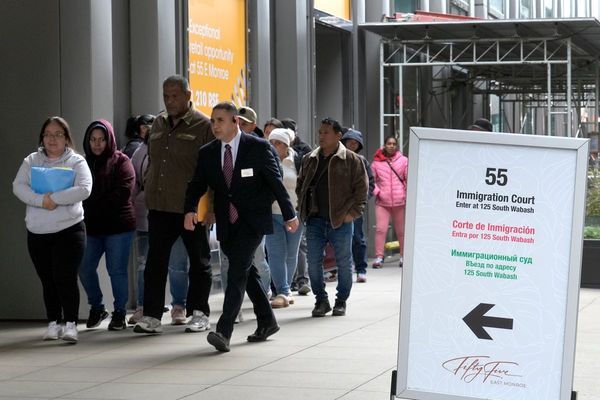Once a standard feature of department stores, from downtown flagships to shopping mall branches, the in-store restaurant has grown scarce in recent years. Two rare surviving examples will close on Saturday. There will likely be some hugs and tears when Boscov’s closes its final two restaurants, ending another chapter in retail history.
It comes as no surprise that Boscov’s held onto its restaurants as long as possible. As America’s largest family-owned department store company, Boscov’s is an anomaly. The Reading, Pennsylvania-based retailer operates 48 full-line department stores that feature large candy counters and sell everything from cosmetics to curtains. Its stores still offer merchandise categories that many major department stores eliminated decades ago.
The closure of its restaurants does not mean that Boscov’s is going anywhere anytime soon. Its sales-per-square-foot figures far exceed industry standards and many of its fiercely loyal customers wouldn’t think of shopping anywhere else.
However, the retailer’s restaurants have become too costly to operate successfully. Generally, department stores never regarded their dining rooms as money makers. Most struggled just to break even.
Boscov’s decided about two months ago to close all of its restaurants by January 30. The effects of Covid-19 were the final straw. Its dining rooms were difficult enough to operate profitably under the best of circumstances, let alone at 25% capacity.
Jim Boscov, the CEO of Boscov’s, admits that it wasn’t a popular decision. Boscov says that many of the store’s regulars were saddened but “very understanding” about the action. He says the firm is “quite fortunate” to have such loyal customers.
“[The restaurants were] never part of the core business and I have to look out over the whole company,” says Boscov. “In today’s world, if you never pull a profit [as with the restaurants], you have to eliminate the loss.”
Covid-19 has dramatically impacted the way people shop. Department stores thrived when shopping was an all-day event. Covid-19 fears have eliminated any desire to linger and browse, much less have a leisurely meal.
Department store restaurants were designed for customer comfort and convenience. They provided food and rest for weary shoppers who might otherwise leave the store to search for dining options. After a break the customers could resume shopping within the store.
There are still a few retailers that remain committed to in-store restaurants. All full-line Nordstrom
Up until Covid-19, Lord & Taylor operated cafes at several of its free-standing locations. These restaurants had served tea sandwiches, quiche, and Waldorf chicken salad for decades. But Lord & Taylor’s cafes never reopened after Covid. Its retail operation returned from its Covid closure only to quickly file for bankruptcy and initiate a liquidation. After 194 years, Lord & Taylor will become a relic of retail’s golden past by mid February.
Macy’s
Macy’s Walnut Room, at its legendary State Street Chicago store, the former Marshall Field’s flagship, still remains intact. It may be considered the country’s last example of the classic traditional formal department store restaurant.
However, Covid-19 has kept the Walnut Room closed. The Walnut Room’s Great Tree, a Chicago tradition for 113 years, was for display only in 2020. There were no special meals under the Great Tree for the holiday season. Besides, all chairs and tables were removed as a precaution.
Covid-19 altered Dallas’ Zodiac Room’s 2020 holiday season. The classic dining space, located in the downtown Neiman Marcus flagship, is a holdover from the era of finger sandwiches, canapes, and afternoon tea. The Zodiac Room successfully reopened in time for the holidays but its annual holiday buffet, a Dallas tradition, had to be abandoned due to coronavirus concerns.
Boscov’s restaurants were not designed to replicate the opulence of the Zodiac Room or even the extravagance of Hess’s famous Patio restaurant in Allentown, Pennsylvania. Boscov’s dining rooms were all about curved counters, salad bars, and cherry pies. They were simple places to eat, relax, and socialize – nothing more, nothing less.
It was the same type of experience that one would have found at most department stores of the time. McCurdy’s in downtown Rochester, New York, referred to its restaurant as a “festive gathering place for happy shoppers” who enjoyed “downright delicious food without emptying pocketbooks.” At Los Angeles’ May Company store “friendly efficient waitresses” served “everything you deserved for your money.”
The closest comparison to the former popularity and purpose of in-store dining is the IKEA restaurant. IKEA originally intended its cafes to simply offer shoppers a chance to take a break from buying tables, chairs, and picture frames. However, a recent study showed that 30% of all IKEA shoppers frequent the store just for the food.
The decision to close the restaurants was especially difficult for Jim Boscov. After joining the family firm, he was assigned to take over the food division and make it profitable. It was not an easy task but it was “a real educational experience.” One day Boscov found himself driving the commissary truck after a driver called in sick. The truck was stocked with food, but unknowingly, the pies were not secured. He arrived at the Reading North location with “strawberry cheese pie up to his ankles.”
Boscov’s will serve its final Boscobb Salad and Mile High Club sandwich on Saturday. As Jim Boscov previously stated, “if you can’t pull a profit you have to eliminate the loss.” Boscov’s restaurant closure is a loss, in so many ways.







